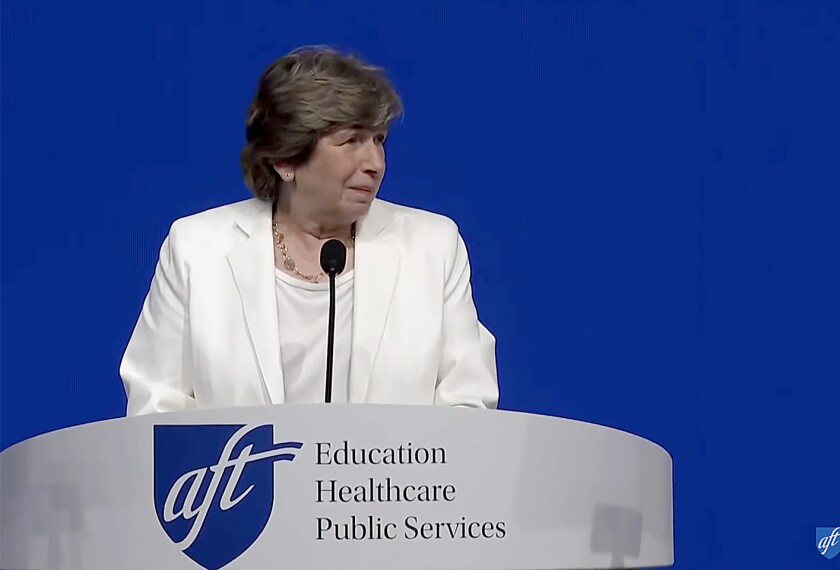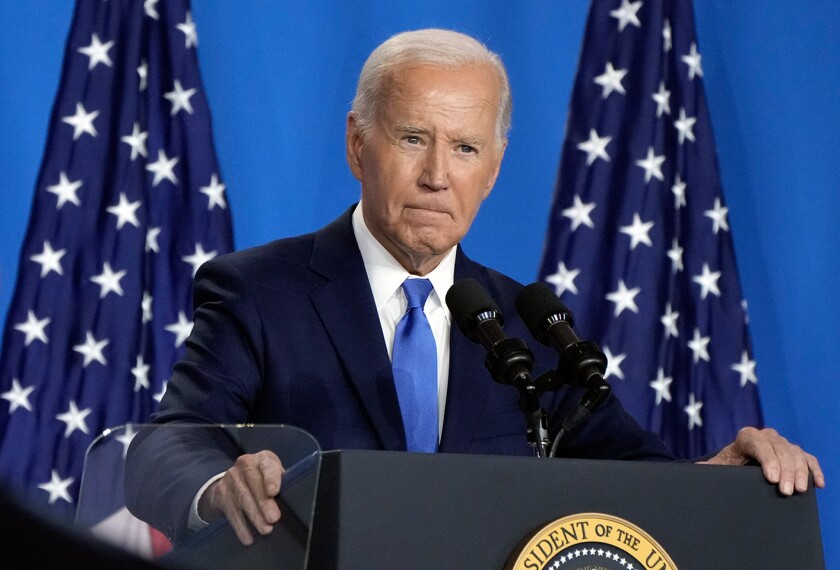Classroom apps, tools, and programs, many driven by artificial intelligence, evolve faster than quality control efforts can keep up.
This more tech-driven and interconnected education landscape will require a different approach to research, development, and evaluation, according to the head of the U.S. Education Department’s research agency.
Matthew Soldner, the acting director of the Institute of Education Sciences, called for a faster and more robust “research and development ecosystem” to build structures to ensure new programs and tools are effective in the classroom.
For example, while IES traditionally awards grants for five-year studies, it has launched one new pilot called “Seedlings to Scale,” in which cohorts of research teams will compete for three rounds of progressively larger grants: first to create a prototype and indicators of success; next to develop the program or product and test its effectiveness; and finally to take successful programs to scale. Only about a quarter of the initial cohort will make it to full scale.
Soldner spoke with Education Week about how he sees education research changing. This interview has been edited for length and clarity.
How do you see technology changing the focus of education research?
Particularly when the product is educational technology, the pace of development just so rapidly outstrips not just the capacity of the [What Works Clearinghouse] but the capacity of traditional forms of impact research.
Look, for example, at the frequency with which districts change textbook adoptions, the textbook is changing every three or four years. It barely provides time for that textbook to get into the classroom, to have some sort of rigorous study done, and have the results looked at before it changes again, where that version of the product is no longer commercially available, and the publisher moves on to the next. The pace is nearly impossible to do the depth of research you might like, and so we have to continue to find models that will allow us to be responsive to that.
You’ve expressed interest in a “living evidence” model. How does that differ from the current research models?
The principle is that we should always be searching the literature to find the latest research on a topic, incorporating that new research into our understanding of what works, and giving that information out to our public as quickly as possible.
You might think that’s how everything operates currently, but actually, it’s not. If we want to, for example, work on struggling adolescent literacy, we will survey all the literature in that space, do our publication, and then not monitor that literature for a period of time until we decide to come back to that topic. [If] something is published, then let’s say 20 or 25 years go by, and people begin to wonder how things changed.
In many areas, the literature is changing so quickly, so dramatically that you would need to be updating a practice guide every two or three years. But at least you would be monitoring that literature ... and people would have confidence that you had in fact looked at the most recent research. It’s a real fundamental shift, in terms of this constant monitoring of the flow of incoming evidence.
How is IES’s new push for R&D scale-up different from prior initiatives?
It is thought to be a pipeline, a continuous [movement] upward in evidence building. In terms of scale, we really are getting a wealth of aligned investments around a shared topic, really investing time and energy in those. ... It’s a bit more structured, it’s a bit more hands on, with the expectation that if you are showing that your project is a good fit to what the market is looking for and is effective, that you will have the opportunity to move up.
It’s our intention that this really places the educator and the classroom at the center of the development effort in that first phase.
IES has made science education one of those priority areas. Why focus on science now?
Science [education] really is a space where perhaps even less is known than math, or at least we have less rigorous evidence about what works and we have the same kind of real dire performance gaps. If we look back at the data that we have from 2019, more than 40 percent of all 12th graders were below basic [in the National Assessment of Educational Progress for science]. And that’s so much worse for Hispanic students—about half—and Black students, about 70 percent. So that science proficiency gap is huge.
As a nation, we have chosen to make more and larger investments in the nation’s long-term competitiveness and our national security than ever before in [science, technology, engineering, and math]. That includes AI, clean energy, pandemic preparedness ... but if we’re going to realize that moment and, and turn those dollars into progress, we have to have increasing levels of science and math literacy amongst our students.
The pandemic massively disrupted education research. How much have we been able to recover that research capacity?
I think we are still in [the] throes of recovering from the pandemic. In some places, schools aren’t yet ready to return to having researchers on the ground or research being conducted in schools the way they once were. Recruitment, even for new studies, continues to be a challenge.
We have been talking with any group of researchers who will listen on ways in which researchers can think about really engaging communities with the work they’ve proposed to do. We’re suggesting strongly that researchers spend a lot of time on the ground with schools they are trying to recruit, trying to understand what problems they are trying to solve, … [and] making sure that the research is truly responsive to their needs.
Where do you see the biggest potential for paradigm-shifting research in education?
It is more often the case that folks want to understand basic pedagogy or test that in an intervention, than that they are bringing entirely new models of how we might structure teaching and learning. So, what if learning took place in a system or in a model that was very different from what we have today? What if the systems we have today were better connected and more seamlessly bridged education systems with social support systems?
I think if we’re looking for true paradigm shifts, it’s likely to be less some new intervention, some new ed tech product, but instead something that really disrupts how teaching and learning is delivered.






